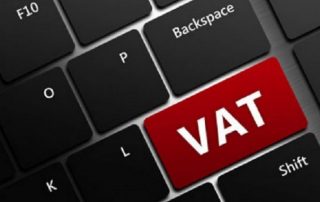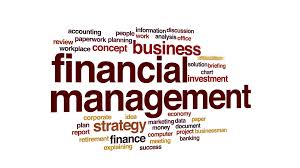The 9 Hats of an Entrepreneur –Non Executive Director
First, let me explain what the difference is between an Executive Director and a Non-Executive Director is and what their hat looks like. Any board of an organisation is made up of paid staff and outside consultants. The Executive Director heads the organisation; they have day-to-day responsibility for the processes and procedures of the business and draw a salary for this.
A Non-Executive Director sits on the board and is a non-salary person but has responsibilities that include Strategy, Performance, Risk and People.
Every business needs Non-Executive Directors, or as we call them, consultants of Business Coaches. They are people who sit in on meetings and are able to speak into the life of the business with their experience and non-emotional, unbiased opinions. It is critical to have such a hat in your business. We get too close to the trees to see the wood and often fail to move beyond our current blinked vision. Allocate someone who has experience in your field and who have gone places you wish to go to and appoint them to your board as a Non-Executive Director. Give them the hat and allow them to use it as they see fit. We find that to network with such people or to join a think tank or community is hugely beneficial to any business. It does take a humble Manager and Share Holder to stop and listen to what is being said, but the entrepreneur will gladly seize these ideas and run with them.
VAT efficiency, maximizing the 1% increase
We continue discussing the issue of the VAT and its implications for your business. Today we look at how you can make your business VAT efficient, especially with this VAT increase already in effect.
If you are a VAT registered company, it will be VAT efficient to ensure that as much as possible your suppliers are VAT registered. I have come across many VAT registered businesses who have no VAT registered suppliers at all except their bank of course. This meant that whatever they charged to their clients on the tax invoices as VAT Output was what they were meant to pay to SARS. Therefore they never set –off some of this Output VAT with Input VAT; thereby reducing their VAT payable.
The disadvantage is that if in any VAT period, you purchase a lot of inputs for a project that will only be invoiced in later periods upon completion; you will end up paying the maximum VAT on the little invoices that you have raised for your clients. If on the other hand, the suppliers had been VAT registered, this may have resulted in little VAT payable or even a VAT refund from SARS. This defeats the benefit of the VAT. As per its definition, VAT is meant to be a tax paid on the value added to the output goods from input goods. In plain words, your Output/Sales less Input/expenses (VAT) is =Value Added x15% is the VAT payable.
Purchasing from non-registered suppliers also means that the business has to charge higher prices as their costs a relatively higher compared to having purchased from a VAT vendor. This may make the company’s products more expensive and thus less competitive, reducing demand for the products/services. This, in turn, means that the company’s output VAT is higher, not only making its products more expensive but also resulting in them paying more Output VAT to SARS. Whereas, if they had purchased supplies from VAT vendors, their prices would not have changed as a result of a VAT increase, their prices would still have been competitive and they would owe SARS less.
In these challenging times of adjusting to the VAT increase, it pays for a business to figure out ways of being VAT efficient. This will go a long way in saving than some Rands and will also reduce their VAT burden as VAT paid will be in line with business production activities.
Financial Management – When is income really income?
Over the next few weeks, we’ll be looking at the various pieces of the puzzle that are the financial statements, so that you understand where to look for something, where information should go, and what you can get out of the information presented. Today we’ll look at INCOME, which is at the top of the income statement, usually the place people start.
Not all receipts (into the bank account) are income. This is important to understand, especially if you are managing your business from your bank account. Some receipts are the payment from your customers for your product/service, but receipts may also be of interest earned, repayments of a loan you’ve given, or reimbursement of expenses you’ve paid. The last two should be set off against the original payment and not recorded as income in your financial statements.
In accounting terminology, there are 3 main categories of income:
- Sales of your product or service (which is obviously the most important for most businesses)
- Passive income generated on your assets, this includes interest on your bank accounts, interest charged on loans given to others, dividends on investments, charges for using your equipment or vehicles, amongst others
- Other income, this is income that is not generated by the business, such as grants or donations or profit on disposal of assets
In your annual financial statements, there will be a line for each of these, if relevant. However, from a management point of view, you may want to break them down further and reflect a number of lines for sales in your management statements. You may have separate product lines, divisions, or locations. It can be useful to see the sales at this level to understand what is working in your business. Many accounting packages allow you to print a report showing the sales per product/service, which can be very helpful to review regularly.
Although income will be summarised in your annual financial statements, management should be engaging with the income at a more detailed level on a regular basis to assist in making business decisions.
Next week, we’ll look at cost of sales and the meaning of gross profit.
I run a business and I have never submitted tax what should I do
Every business that is liable for tax under the Income Tax Act, 1962 is required to register with SARS as a taxpayer within 21 days of becoming liable. This registration can be done once for all different tax types (VAT, PAYE etc) using the client information section link on the SARS website.
If a business has been running and not paying tax it will have to register as a taxpayer as soon as possible. SARS does not only impose penalties for late registration and late submission of tax returns it also imposes penalties for late registration where the company should have registered as a taxpayer. The more the company delays in registering for tax and submitting returns the bigger the liability might just get. In the case that the business has been making losses, nil returns will be submitted for the years where no tax returns were done. Penalties and interest may be charged by SARS for the years where tax is payable to SARS.
In the event that the company finally registers as a taxpayer and all outstanding returns are submitted with the result being amounts due to SARS including penalties and interest and the taxpayer cannot settle the amounts at one go, payment arrangements can be made with SARS.
If your business finds itself in a situation where registration as a taxpayer was not done in time, the best will be to seek professional advice. Call SARS and speak to a consultant who will gladly assist or you can walk into any SARS branch closest to you or speak to your accountant or tax practitioner. They will be able to assist with the registration and submission of all outstanding tax returns.
Don’t get caught with mothballs in your wallet
‘Cash is king’, says everyone to a small business owner. It’s not a platitude, it is true. It doesn’t matter what your sales are if your customers haven’t paid you.
As a business owner, you have it down to a fine art the ability to pay your creditors at the last minute, while chasing your debtors furiously. You’ve mastered the art of putting people off just a few more days so you can pray earnestly that enough money comes in, just in time. You are the King/Queen of last minute and stretching the last cent.
Imagine, it’s one of THOSE months, and you get a call from your accountant reminding you that your provisional tax is due in 2 weeks’ time. After you’ve sat down, had a zanex or a cup of coffee, you scroll through your contacts list to see who you can call, what plan you can make, how you can scrape to get the cash ready in time. As you know, SARS are the worst creditors, they really make you pay if you are late!
Is this your reality? It shouldn’t be. You know exactly what you need to have in the bank to make it through the month, but do you know what the annual (once a year) costs are, and when to expect them? Things like subscriptions, licence fees, membership fees, provisional and income tax, annual financial statements, etc. The annual costs should be included in your diary at least a month in advance to avoid any surprises.
It is also important to plan for these large amounts. Seldom do you have the spare cash lying around just when you need it? It is important to set aside a contribution towards the cost each month. If you provide for it now, regularly and without fail, the money will be there when you need it. And put the provision in a separate bank account so you’re not tempted to use it!
Give us a call if you need some assistance establishing what costs you need to keep track of and how much you should set aside for them.





